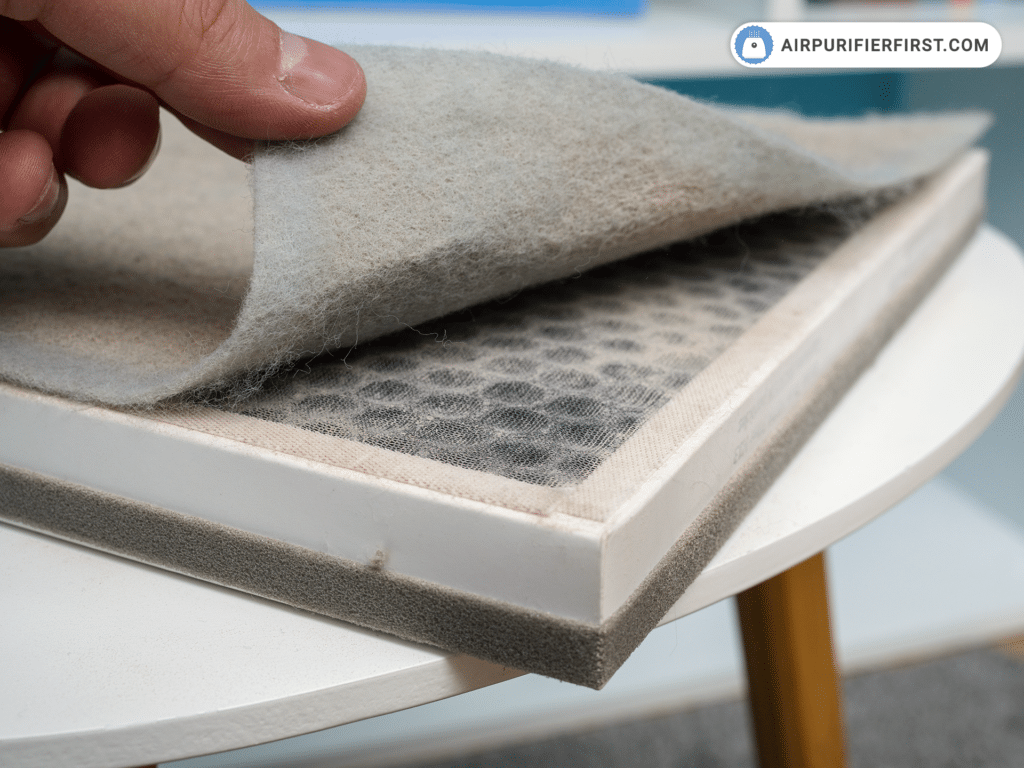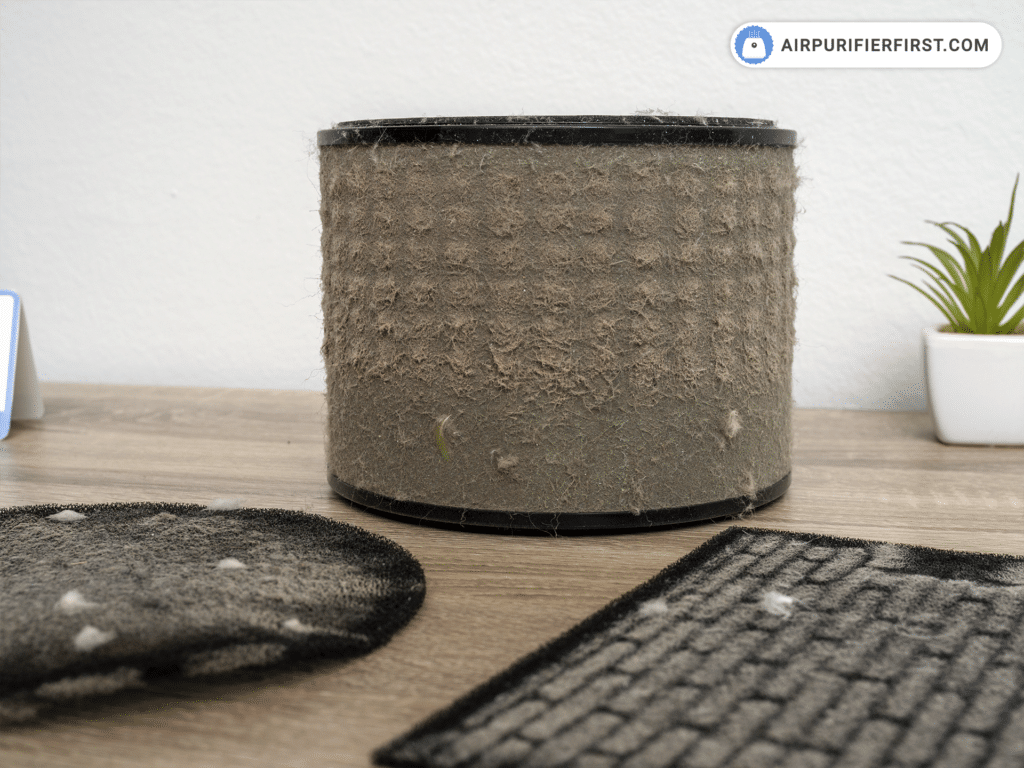Dust is everywhere in our homes, settling on surfaces, sticking to furniture, and floating in the air. It’s something that can’t be unnoticed. But what exactly is dust? How can we prevent it? And, most importantly, what impact does it have on our health?

Table of Contents
To answer all these questions more deeply, I’ve explored numerous research studies and engaged in discussions with different people to gain diverse perspectives on this issue. Furthermore, my years-long battle with dust and dedicated research for a solution make this a perfect article to share my experience and insights.
As described in National Geographic magazine, dust comprises microscopic particles from various materials. It’s heavy enough to be visible yet light enough to be carried away by the wind.
In this article, I will explain dust – describe its composition, and address other related queries, all backed by science. Moreover, I’ll share personal experiences in tackling household dust. This includes insights gained from testing over 70 air purifiers and my persistent efforts to combat dust since 2016.
Key Findings about Household Dust!
- Household dust comprises a mix of microscopic particles, including dead skin cells, hair, clothing fibers, bacteria, pollen, and dust mites.
- Dust can cause minor irritations like sneezing or a runny nose for most but poses a higher risk for individuals with respiratory conditions, allergies, or compromised immune systems.
- Dust mites, a major component of household dust, are significant triggers for allergies and asthma.
- Research by the NRDC and a few more institutions found up to ten potentially harmful compounds in 90% of dust samples.
- Effective strategies for removing dust include regular cleaning, using HEPA filter vacuums, using air purifiers, dusting with a damp cloth, keeping windows closed, and changing bedding regularly.
- Air purifiers, especially those with HEPA filters, effectively remove airborne dust particles.
What is Dust and What is it Made Of?
As mentioned earlier, dust consists of microscopic particles that are heavy enough to settle yet light enough to be carried by the wind. I believe it’s familiar to anyone, whether it’s the layer we notice on furniture or the particles floating in the air around us.
Dust is composed of various particles such as pollen, dead skin, dust mites, or other outdoor particles. In this article, my focus will be on household dust, as that’s something I have been facing for a while and have become intimately familiar with.
It might surprise you that whenever you open a window in your home, you’re letting some dust particles inside.
How Dangerous is Household Dust?
Household dust is very common in almost every home. It typically accumulates on surfaces like carpets, curtains, and furniture or floats through the air. This dust is a mix of particles such as dead skin cells, hair, clothing fibers, bacteria, pollen, dust mites, and more.
The question is: How dangerous is household dust for our health? For the majority, dust may only cause minor irritations, such as sneezing or a runny nose. However, for individuals with respiratory conditions, allergies, or compromised immune systems, the impact of dust can be significantly more intense.

Furthermore, dust mites are a common cause of allergy and asthma symptoms and comprise a significant component of household dust. Dust can also harbor bacteria and fungi, particularly in overly humid environments, posing additional health risks.
Did you know?
Research involving five institutions, including the Natural Resources Defense Council (NRDC), found that up to ten potentially harmful compounds were present in 90 percent of dust samples analyzed.
Ways of Preventing the Household Dust
While it’s impossible to completely eliminate dust from your home, there are effective strategies to reduce, prevent, and remove it partially. Regular maintenance is key, and here are some practical tips to follow.
Regular cleaning: Dust inevitably settles on various surfaces in your home, making regular cleaning essential. Focus on floors, shelves, electronic devices, and any other dust-prone areas, cleaning them at least once a week. Adjust the frequency as needed based on your home’s dust levels.
Vacuum regularly: Regular vacuuming of carpets and rugs significantly reduces visible dust. For optimal results, use a vacuum cleaner with a HEPA filter to prevent dust from redistributing into the air. Also, consider a robotic vacuum for more frequent, hassle-free cleaning.
Use an air purifier: Dust doesn’t only stay on surfaces; Airborne dust, which can be more harmful to health than settled dust, is effectively removed by air purifiers. These devices capture and eliminate airborne particles, including dust and pollen, thereby reducing their chances of settling on surfaces.
Dust with a damp cloth: Instead of a dry microfiber cloth, opt for a damp one. A damp cloth effectively traps dust, preventing it from scattering into the air during cleaning.
Keep windows closed: Open windows can let pollen, dust, and other airborne particles enter your home. This is especially important on windy days when the air outside is likely to contain higher concentrations of these particles.
Change your bedsheets regularly: Bedsheets and bedding can accumulate significant amounts of dust. To minimize this, use dust mite-proof covers for mattresses and pillows, and wash bed linens regularly. Changing bedding frequently can help reduce the dust that becomes airborne when making your bed.
FAQ on Dust
What are dust mites?
Dust mites are microscopic creatures, measuring between 0.2-0.3 micrometers, which are common household pests found in many homes. They are dominant in many homes, thriving in warm and humid environments. These pests are commonly found in bedding, furniture, carpets, curtains, and other fabrics. Importantly, dust mites are known to be significant triggers for allergies and asthma.
Will dust cause a sore throat?
Yes, dust can cause a sore throat! This can happen especially in individuals who are sensitive to dust and/or have certain respiratory conditions.
How can I capture airborne dust particles?
The most efficient way of capturing airborne dust particles is using an air purifier equipped with a HEPA filter. However, you must ensure that the air purifier is sufficiently powerful to cover the size of your room. For optimal performance, choose an air purifier with a 4.8 ACH (air changes per hour) rating suitable for the specific room size.
Final Thoughts
Dust is all around us, whether we are conscious of it or not, and it is our choice whether to combat its presence or not.
In all honesty, I consistently advise people to do their best to eliminate dust particles, whether by hand or with the help of various devices. In my home, I use a robotic vacuum cleaner and air purifiers, and I can testify to the noticeable difference they make in reducing airborne dust and already-settled dust on carpets. The difference in the amount of dust floating in the air is significantly lower in my home when I use an air purifier than when I don’t.
I believe that if you apply even some of the advice from this article, you’re likely to see a significant decrease in the dust levels in your home in a very short period of time.
If you have any questions on this topic, please feel free to leave a comment in the comment section below.
Leave a Reply